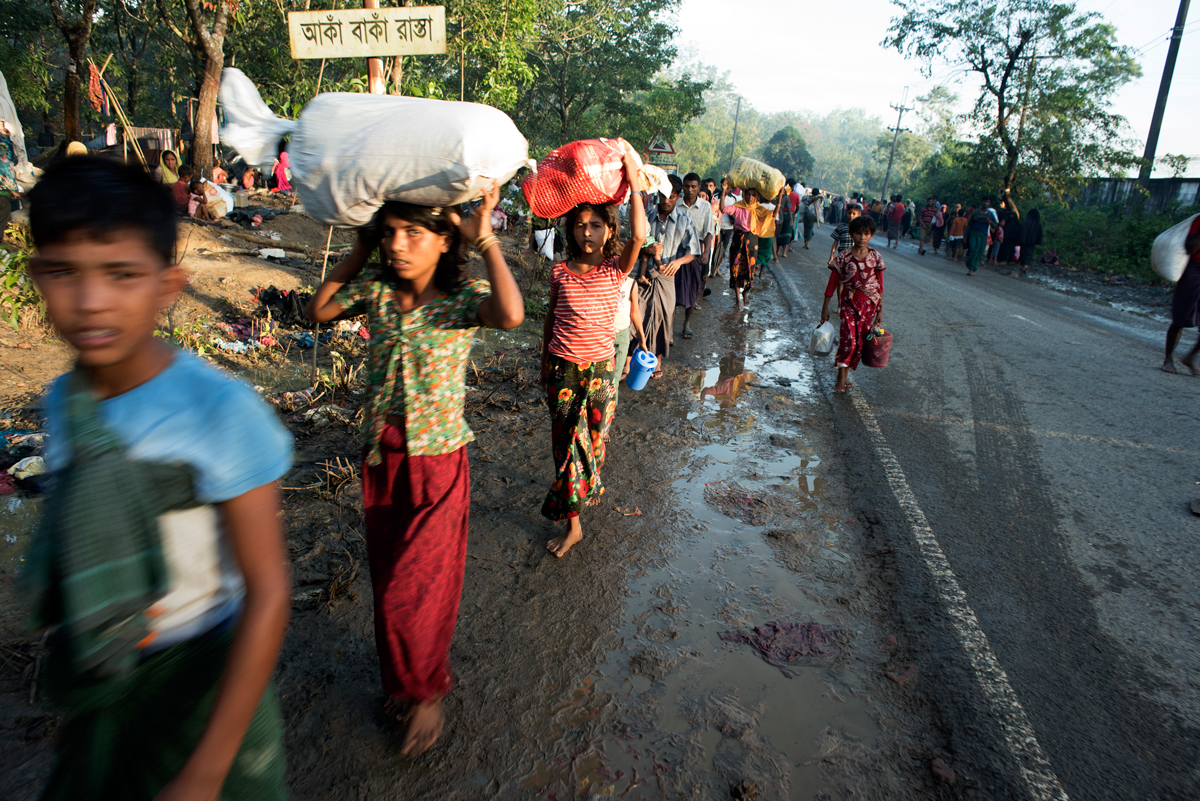April 06, 2020

As the coronavirus pandemic ravages the globe, Rafique*, a Rohingya refugee, faces an impossible predicament. After suffering genocide in his native Burma, Rafique is now trapped between the ongoing risk of genocide in his home country and the imminent spread of a deadly virus in the overcrowded refugee camps in Bangladesh.
In February, Simon-Skjodt Center staff traveled to the refugee camps, where over one million Rohingya now reside, to meet with Rafique and other Rohingya refugees and learn more about the risks they face.
The refugees’ message was clear: they want to go back home. But in the two-and-a-half years since the Burmese military escalated its genocidal campaign against the Muslim minority, conditions in Burma have not fundamentally changed and the risk of genocide persists.
The estimated 600,000 Rohingya remaining in Rakhine state in Burma face unrelenting persecution by the government. Over 100,000 are forcibly interned in camps that resemble open-air prisons, and the rest cannot move freely or access proper healthcare or education. Additionally, as fighting between the Burmese military and the Arakan Army escalates, Rohingya are reportedly caught in the crossfire and targeted in attacks. An ongoing internet blackout in several townships in Rakhine state prevents proper monitoring of the military’s attacks.
When we asked what it would take for refugees to return home, we were repeatedly told, “Where is the guarantee that if we return home this won’t happen again?” Though they yearn to go home, the Rohingya need the Burmese government to guarantee their physical safety and ensure that there will not be a repeat of the 2017 military attack that led to the mass exodus across the border, and to restore their citizenship rights that were revoked in 1982.
But the Burmese government continues to deny the well-documented atrocities against the Rohingya, refuses to grant them citizenship, and even refuses to call them by name.
The Rohingya refugees have waited over two-and-a-half years in camps in Bangladesh. Now, the coronavirus looms over the overcrowded camps, where bamboo and tarpaulin shelters are packed tightly together and refugees struggle to acquire clean water, much less regularly wash their hands. The Bangladesh government has banned 3G and 4G internet access in the camps, preventing information-sharing that could save lives. An outbreak seems imminent, and thousands more Rohingya could die. Meanwhile, the more than 100,000 Rohingya in the camps in Rakhine state in Burma are also at heightened risk of contracting the virus. The Burmese government could use the coronavirus pandemic as an excuse to increase attacks on the Rohingya in Burma and cast those in Bangladesh as dangerous outsiders that cannot be allowed to return.
As countries turn inward to protect their own populations from the coronavirus, we must not forget the need to protect Rafique and other survivors of genocide—and prevent the kind of atrocities that forced them into this unthinkable situation.
*name has been changed
View All Blog Posts